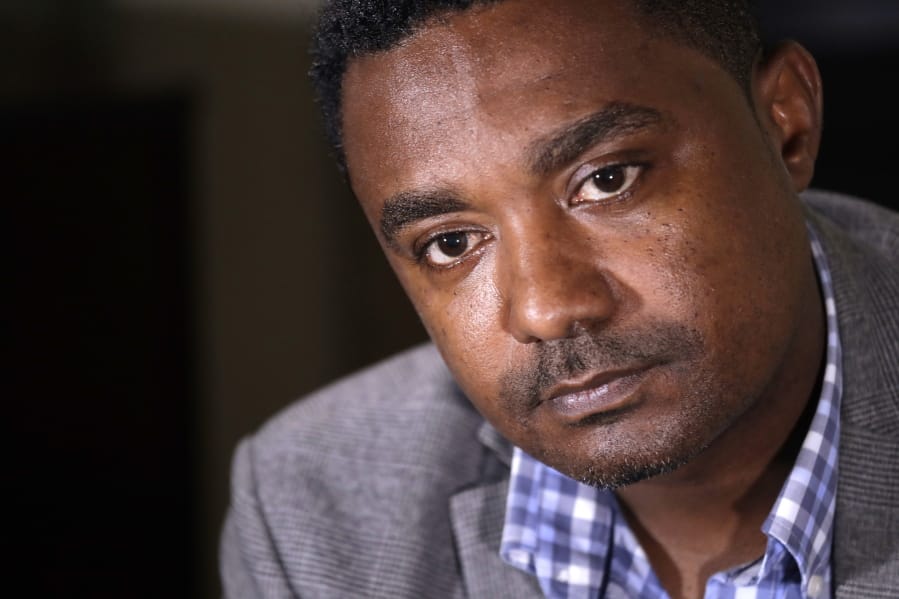SEATTLE — Ethiopian Airlines’ former chief engineer says in a whistleblower complaint filed with regulators that the carrier went into the maintenance records on a Boeing 737 Max jet a day after it crashed this year, a breach he contends was part of a pattern of corruption that included fabricating documents, signing off on shoddy repairs and even beating those who got out of line.
Yonas Yeshanew, who resigned this summer and is seeking asylum in the U.S., said that while it is unclear what, if anything, in the records was altered, the decision to go into them at all when they should have been sealed reflects a government-owned airline with few boundaries and plenty to hide.
“The brutal fact shall be exposed … Ethiopian Airlines is pursuing the vision of expansion, growth and profitability by compromising safety,” Yeshanew said in his report, which he gave to The Associated Press after sending it last month to the U.S. Federal Aviation Administration and other international air safety agencies.
Yeshanew’s criticism of Ethiopian’s maintenance practices, backed by three other former employees who spoke to AP, makes him the latest voice urging investigators to take a closer look at potential human factors in the Max saga and not just focus on Boeing’s faulty anti-stall system, which has been blamed in two crashes in four months.
It’s not a coincidence, he said, that Ethiopian saw one of its Max planes go down when many other airlines that fly the plane suffered no such tragedy.
Ethiopian Airlines portrayed Yeshanew as a disgruntled former employee and categorically denied his allegations.
Yeshanew alleged in his report and interviews with AP that Ethiopian is growing too fast and struggling to keep planes in the air now that it is carrying 11 million passengers a year, four times what it was handling a decade ago. He said mechanics are overworked and pressed to take shortcuts to get planes cleared for takeoff, while pilots are flying on too little rest and not enough training.
And he produced an FAA audit from three years ago that found, among dozens of other problems, that nearly all of the 82 mechanics, inspectors and supervisors whose files were reviewed lacked the minimum requirements for doing their jobs.
Yeshanew included emails showing he urged top executives for years to end a practice at the airline of signing off on maintenance and repair jobs that he asserts were done incompletely, incorrectly or not at all. He said he stepped up his efforts following the Oct. 29, 2018, crash of a Lion Air Boeing 737 Max in Indonesia that killed all 189 people on board. One email Yeshanew sent to CEO Tewolde Gebremariam urged him to “personally intervene” to stop mechanics from falsifying records.
Those pleas were ignored, he said. And after the March 10, 2019, nosedive crash of an Ethiopian Boeing 737 Max outside Addis Ababa that killed all 157 people on board, Yeshanew said it was clear the mindset had not changed.
Yeshanew said in an interview that on the day after the crash, Ethiopian’s Chief Operating Officer Mesfin Tasew openly agonized that the airline could get blamed because of its maintenance “issues” and “violations,” and he ordered that records on the downed Max plane be checked for “mistakes.”
That same day, Yeshanew said in his report, someone logged into the computerized maintenance record-keeping system, specifically on the records from the downed plane that detailed a flight-control problem — “a roll to the right” — that pilots had reported three months earlier. Yeshanew included in his report a screenshot of a directory of the records related to the problem that showed a final entry that was time-stamped March 11.
Yeshanew said he didn’t know what was in the records previously or if they were changed, only that the records were left to say that tests had been done and the issue had been resolved. While he doubted that the flight-control problem brought the plane down, he said any changes to the records would call into question the actual condition of the airplane at the time of the crash as well as the integrity of the airline as a whole.
Aviation experts say that after a crash, maintenance records — specifically, log books and task cards containing notes by pilots and fixes by mechanics — are required by international air safety regulators to be immediately sealed off, and any attempt to manipulate them is a serious violation tantamount to trampling on a crime scene.



